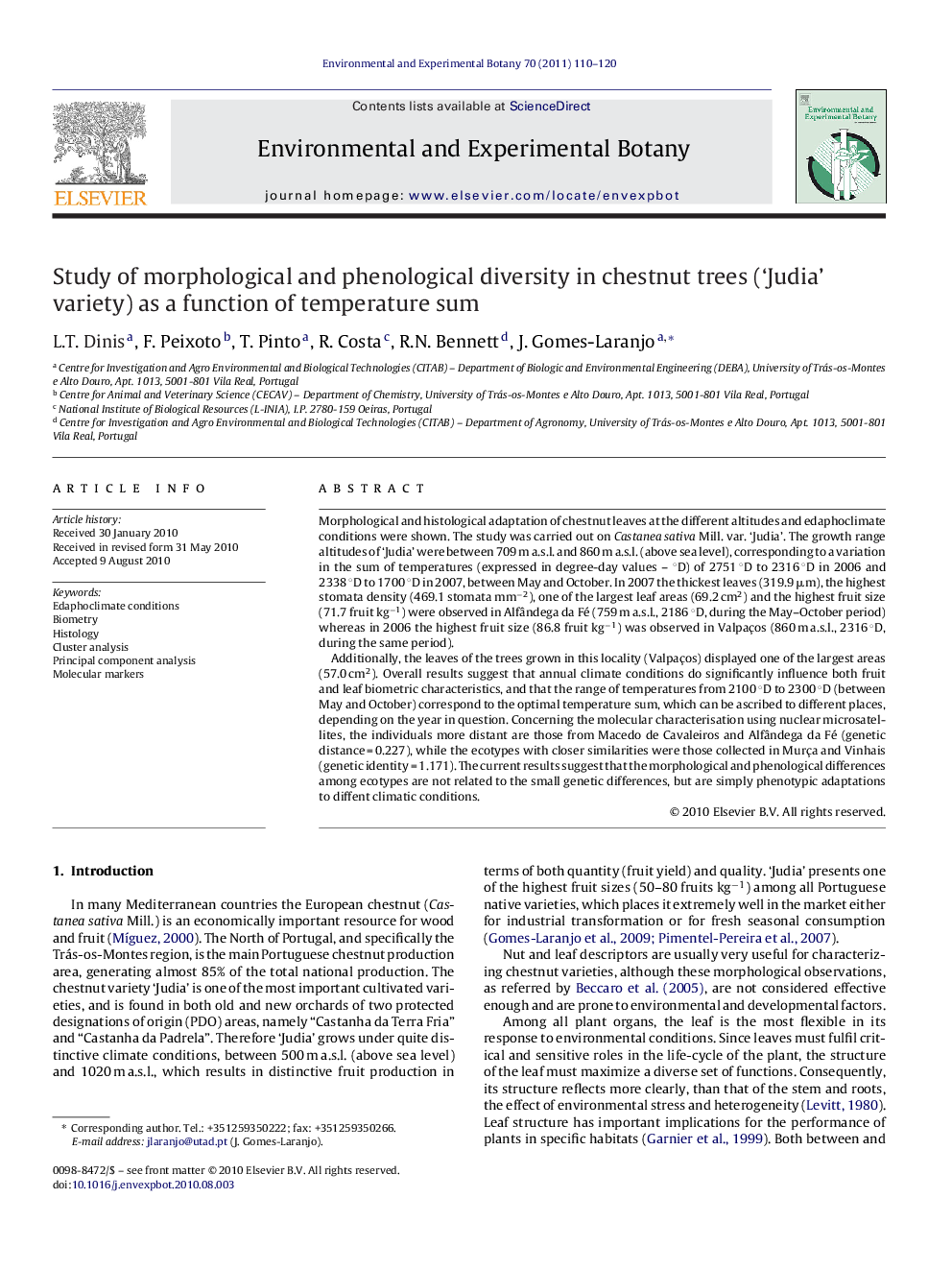| Article ID | Journal | Published Year | Pages | File Type |
|---|---|---|---|---|
| 4554921 | Environmental and Experimental Botany | 2011 | 11 Pages |
Morphological and histological adaptation of chestnut leaves at the different altitudes and edaphoclimate conditions were shown. The study was carried out on Castanea sativa Mill. var. ‘Judia’. The growth range altitudes of ‘Judia’ were between 709 m a.s.l. and 860 m a.s.l. (above sea level), corresponding to a variation in the sum of temperatures (expressed in degree-day values – °D) of 2751 °D to 2316 °D in 2006 and 2338 °D to 1700 °D in 2007, between May and October. In 2007 the thickest leaves (319.9 μm), the highest stomata density (469.1 stomata mm−2), one of the largest leaf areas (69.2 cm2) and the highest fruit size (71.7 fruit kg−1) were observed in Alfândega da Fé (759 m a.s.l., 2186 °D, during the May–October period) whereas in 2006 the highest fruit size (86.8 fruit kg−1) was observed in Valpaços (860 m a.s.l., 2316 °D, during the same period).Additionally, the leaves of the trees grown in this locality (Valpaços) displayed one of the largest areas (57.0 cm2). Overall results suggest that annual climate conditions do significantly influence both fruit and leaf biometric characteristics, and that the range of temperatures from 2100 °D to 2300 °D (between May and October) correspond to the optimal temperature sum, which can be ascribed to different places, depending on the year in question. Concerning the molecular characterisation using nuclear microsatellites, the individuals more distant are those from Macedo de Cavaleiros and Alfândega da Fé (genetic distance = 0.227), while the ecotypes with closer similarities were those collected in Murça and Vinhais (genetic identity = 1.171). The current results suggest that the morphological and phenological differences among ecotypes are not related to the small genetic differences, but are simply phenotypic adaptations to diffent climatic conditions.
Graphical abstractFigure optionsDownload full-size imageDownload as PowerPoint slideResearch highlights▶ The edaphclimatic conditions do significantly influence both fruit and leaf biometric characteristics. ▶ The range of temperatures from 2100 to 2300 °D (between May and October) correspond to the optimal temperature sum, depending on the year in question.
